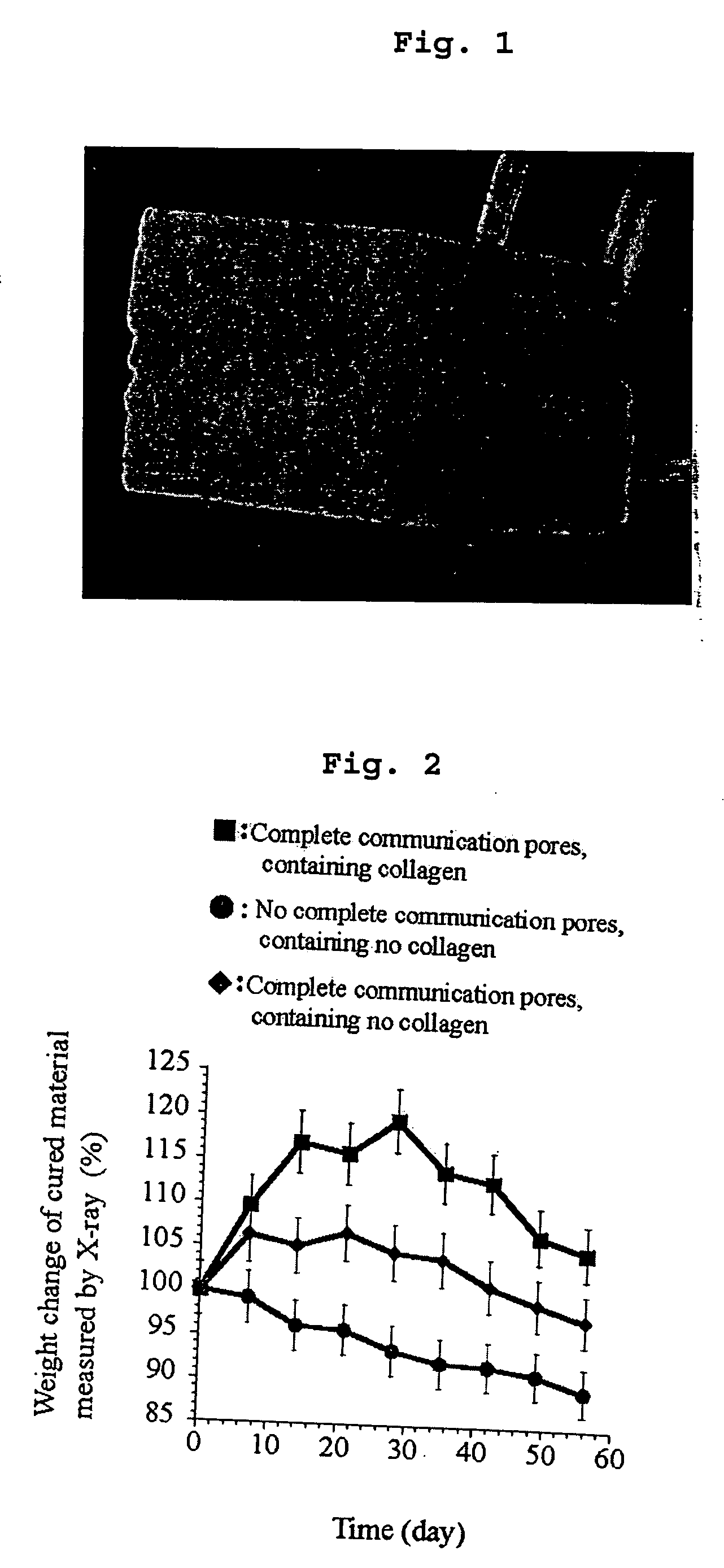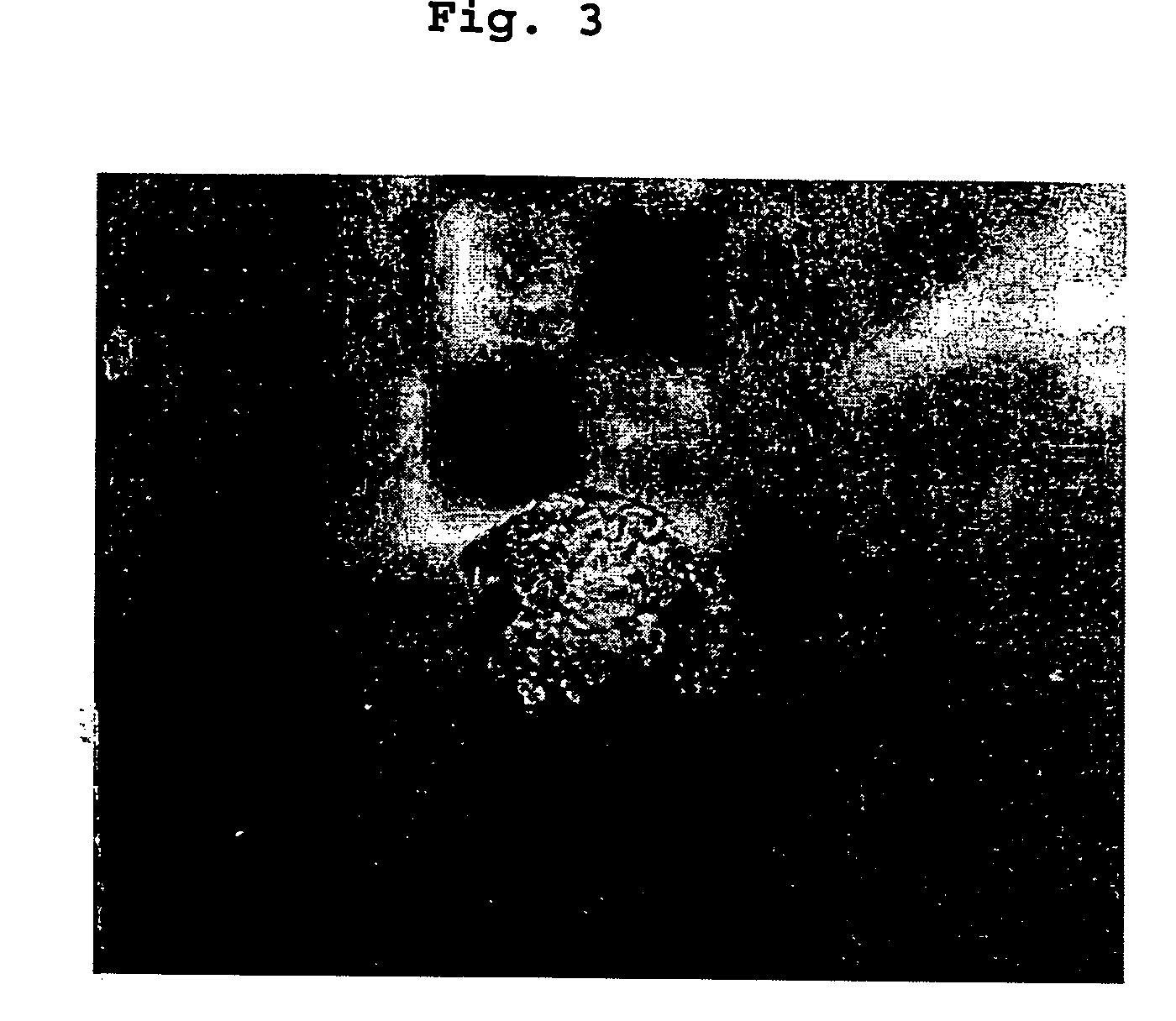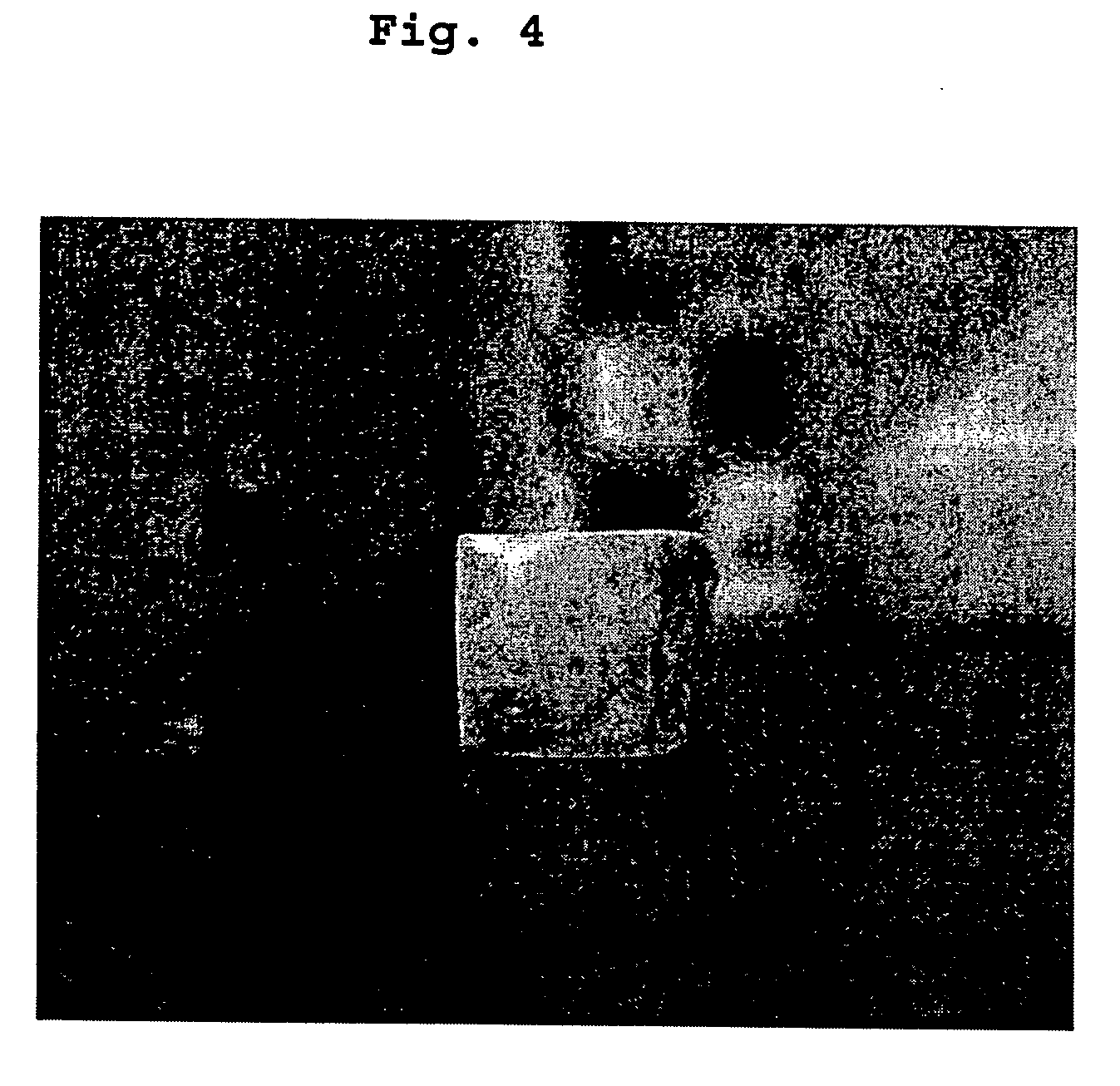Cured porous calcium phosphate material and uses thereof
a porous calcium phosphate and material technology, applied in the field of cured porous calcium phosphate material, can solve the problems of insufficient penetration of tissues such as bone tissue, limited penetration of blood vessels into previously known cured calcium phosphate materials, and application of porous materials to tissue engineering or regenerative medical engineering, etc., to achieve excellent living body affinity, promote bone formation, and prevent infection
- Summary
- Abstract
- Description
- Claims
- Application Information
AI Technical Summary
Benefits of technology
Problems solved by technology
Method used
Image
Examples
example 2
The three types of the cured materials in Example 1 were implanted buried into back muscles of rats. FIG. 2 shows weight changes of the cured materials measured by X-ray transmission for 56 days after the cured materials were implanted in the back muscles of the rats. The density of the porous cured material having complete communication pores and containing collagen increased for 30 days, and then decreased.
Density of the porous cured material having no complete communication pores and containing no collagen slightly increased after implantation, and then decreased gradually. This indicates that the cured material was biodegraded and eroded.
Density of the porous cured material having no complete communication pores and containing collagen slightly decreased after implantation. This indicates that the cured material was dissolved. However, there was no external erosion affecting the shape of the cured material after 56 days.
Thus, the density of the porous cured material havin...
example 3
Calcium phosphate cured material containing an in vitro drug, having 10 complete communication pores, containing collagen.
Tetra-calcium phosphate (TTCP) and hydrogen calcium phosphate dihydrate (DCPD) were weighed at a molar ratio of 1:1, and were mixed and milled using a vibrating mill for 10 minutes. Type I collagen was mixed with the above-described mixture at a weight percent of 25%, and milled using a vibrating mill for 20 minutes. Indomethacin (IMC) was weighed so that it occupied 3% of cement weight. (TTCP: 400.58 mg, DCPD: 188.17 mg, collagen: 138.75 mg, IMC 22.5 mg). 750 mg of the mixture was mixed with 600 μL of the 11 mMol phosphate solution. The mixture was introduced into molds. The porous cured materials were produced by crossing alternately 0×0, 5×2, 5×4 and 5×6 layers so that the numbers of complete communication pores were 0, 10, 20 and 30. The storage conditions were the same as those of the cured materials in Example 1. Respective average porosities were 0, 8, ...
example 4
The following three types of cured materials containing different collagen amounts were produced: (1) Porous cured material having complete communication pores and containing 20% of collagen (2) Porous cured material having complete communication pores and containing 30% of collagen (3) Porous cured material having complete communication pores and containing 40% of collagen
Tetra-calcium phosphate (TTCP) and hydrogen calcium phosphate dihydrate (DCPD) were weighed at a molar ratio of 1:1, and were mixed and milled using a vibrating mill for 10 minutes. To form the collagen-containing materials, Type I collagen was mixed with the above-described mixture at weight percents of 20-40%, and milled using a vibrating mill for 20 minutes. 750 mg of the mixture was mixed with 600 μL of the 11 mMol phosphate solution. The complete communication pores were produced as in Example 1. In the porous cured materials having the complete communication pores and containing collagen, straight line...
PUM
| Property | Measurement | Unit |
|---|---|---|
| porosity | aaaaa | aaaaa |
| diameter | aaaaa | aaaaa |
| diameter | aaaaa | aaaaa |
Abstract
Description
Claims
Application Information
 Login to View More
Login to View More - R&D
- Intellectual Property
- Life Sciences
- Materials
- Tech Scout
- Unparalleled Data Quality
- Higher Quality Content
- 60% Fewer Hallucinations
Browse by: Latest US Patents, China's latest patents, Technical Efficacy Thesaurus, Application Domain, Technology Topic, Popular Technical Reports.
© 2025 PatSnap. All rights reserved.Legal|Privacy policy|Modern Slavery Act Transparency Statement|Sitemap|About US| Contact US: help@patsnap.com



